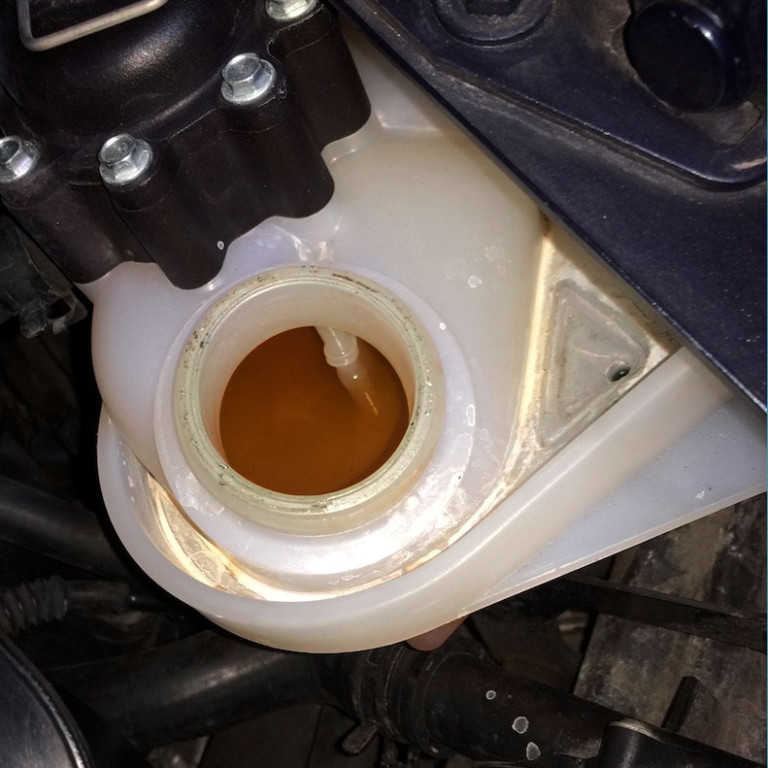

If you see a dark brown, thick liquid around the opening, that is likely motor oil. Some vehicles may have different shades of coolant, but they should all be see-through, not dirty and muddy. Coolant/antifreeze should appear to be a transparent, yellow-green, or orange color. Open up the cap on the coolant reservoir. Screenshot fromĪ quick look under the hood of your vehicle can reveal if there is oil in the coolant system. Notice that nasty milky brown color? That’s bad news. What does oil in the coolant look like? Here you can see what coolant should NOT look like. If not repaired, these problems can cause the engine to overheat and stop working. The presence of oil in your coolant (or vice versa) can hint at mechanical failures in the engine. Oil can degrade the rubber hoses that carry coolant through the engine. If engine oil ends up in the coolant system, it can interfere with the proper operation of the radiator. In the case of your car, motor oil and water-based coolant shouldn’t mingle either. Antifreeze/coolant is often bright green-yellow or orange in color.Īs the old saying goes, oil and water don’t mix. The resulting liquid keeps your engine from getting too hot or too cold. Motor oil is designed to function at high temperatures and carries heat out of the engine.Įngine coolant ( commonly called Antifreeze) contains water and a synthetic chemical called propylene glycol or ethylene glycol. Motor (engine) oil is a dark, viscous liquid that lubricates engine components. What happens if there’s oil in engine coolant? If this happens to you, read on to discover what steps to take next. Sometimes, mechanical components can break down and allow oil and coolant to mix. In the same way, the lubrication and cooling systems of your car’s engine must remain separate. You wouldn’t want exhaust fumes mingling with your cabin air conditioning. They serve different purposes, though, and should never meet. Engine oil and coolant (antifreeze) are vital components of a vehicle.


 0 kommentar(er)
0 kommentar(er)
